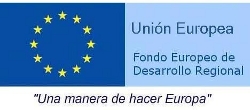Summary
The VARIMOS [1] [2] projects have aimed to develop applications for environmental monitoring both in space and time in a distributed way, using dense and/or sparse monitoring through Wireless Sensor Networks, allowing for the first time to monitor the atmosphere behavior, in particular the thermal structure, with high precision.
Wireless Sensor Networks (WSN) are distributed networks of small autonomous devices known as motes. In these networks, usually at least one mote called sink, acts as a gateway to connect with other networks. Each mote contains power supply, processing unit, memory, sensors and wireless communications but with many constraints, such as limited energy, bandwidth, memory size and computational capabilities. The motes communicate using multi-hop routing protocols.
The developed applications have focused on the measurement of temperature and relative humidity, in different outdoor scenarios for long periods of time, from one month and up to 20 months. The monitored variables have previously been contrasted with the official measures given by the meteorological towers. Other variables, such as atmospheric pressure, current / wind direction, etc. can also been considered experimentally and although prototype.
In the WSN, motes are powered by batteries (and / or solar panels) and can be operational for over a year, working in a distributed and collaborative. Specifically, the figures are made based on 10 min average from each node that are sent to the sink.
We have tested our application in various outdoor deployments with successful results, from urban areas (measurement of temperature and relative humidity gradients in streets), wooded areas (in Náquera, Sierra Calderona), industrial zones (Tactica, Science Park University of Valencia) and in the shore (Cullera-Valencia). Another deployment has been done to determine the vertical gradients for T and RH in the Miramar Tower (Av. De Catalunya, Valencia, exit roundabout A7 towards Barcelona). This deployment is designed as a surveillance system to determine temperature inversions (lower T at ground level and greater T above ground level) that create a high risk of concentrated pollution levels due to the lack of atmospheric diffusion.
WSNs offer several advantages over traditional centralized systems and are potentially very useful in applications such as:
- Environmental Monitoring such as soil, pollution, climate, watershed monitoring, noise in urban environments, etc.
- Monitoring of structures and earthquake prediction.
- Intelligent buildings.
- Monitoring in urban areas and cities (monitoring traffic, road safety, smart parking, etc.).
- Assistance to disabled people.
- Intelligent Response to disasters.
[1][2] This Project has been funded by the Spanish Ministry of Industry, Tourism and Commerce, National Research Program, and the FEDER program with references VARIMOS2 (TSI 20110-2009-148)[2] and VARIMOS (TSI 20100-2008-350)[1].

